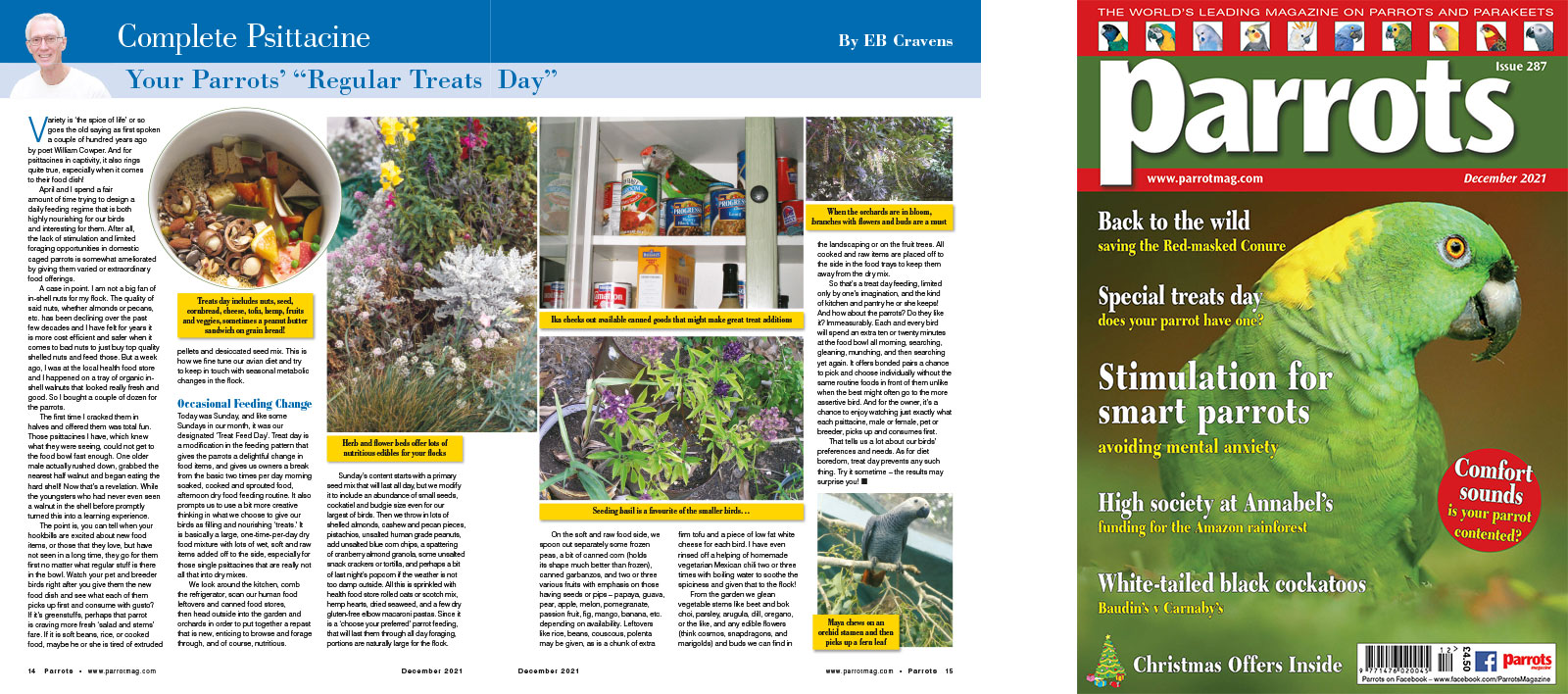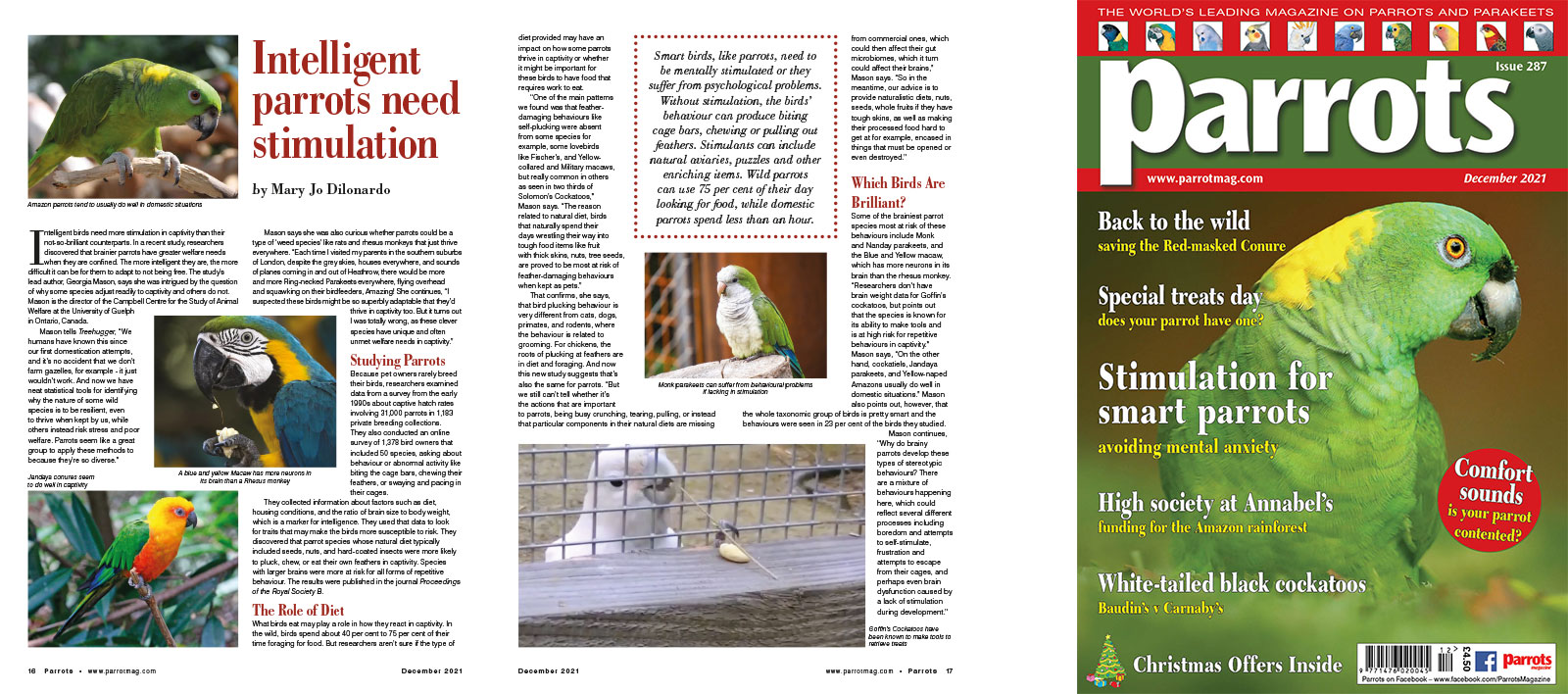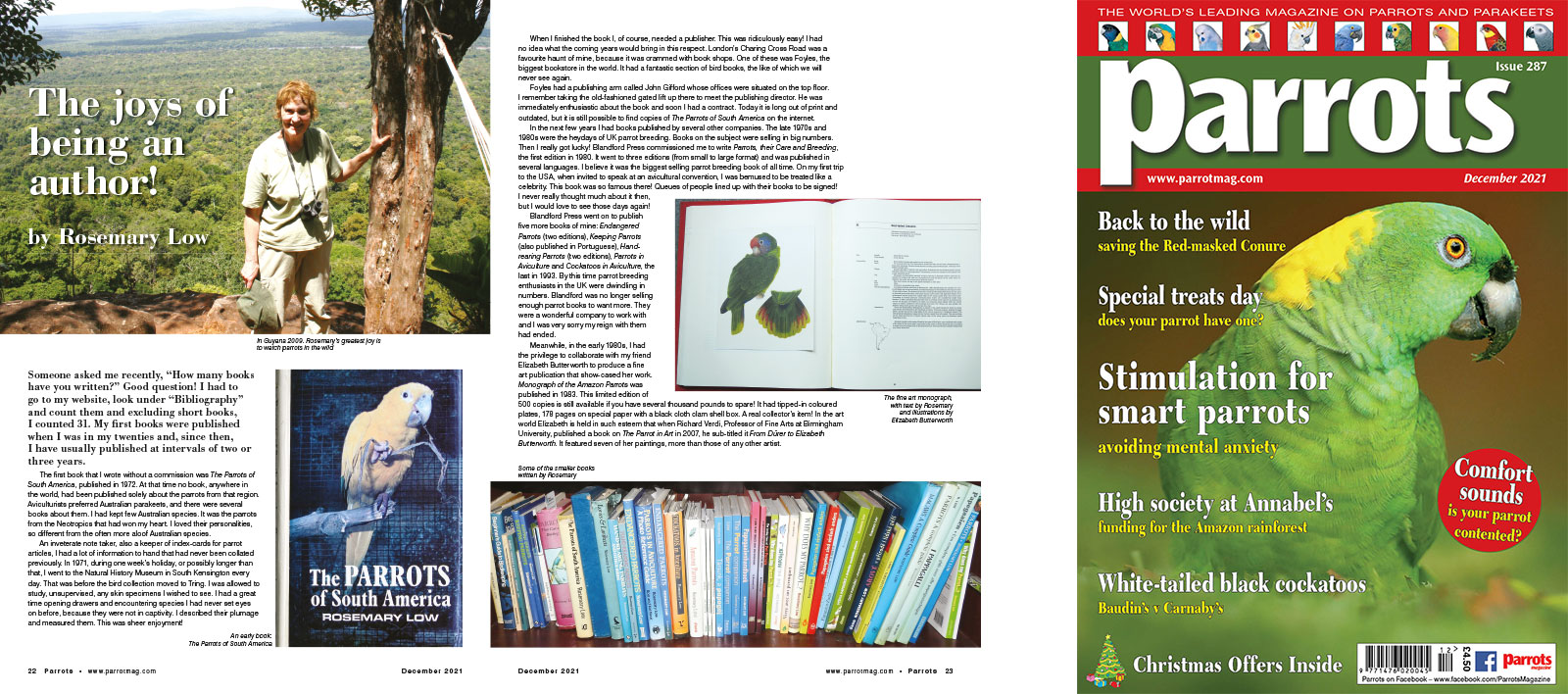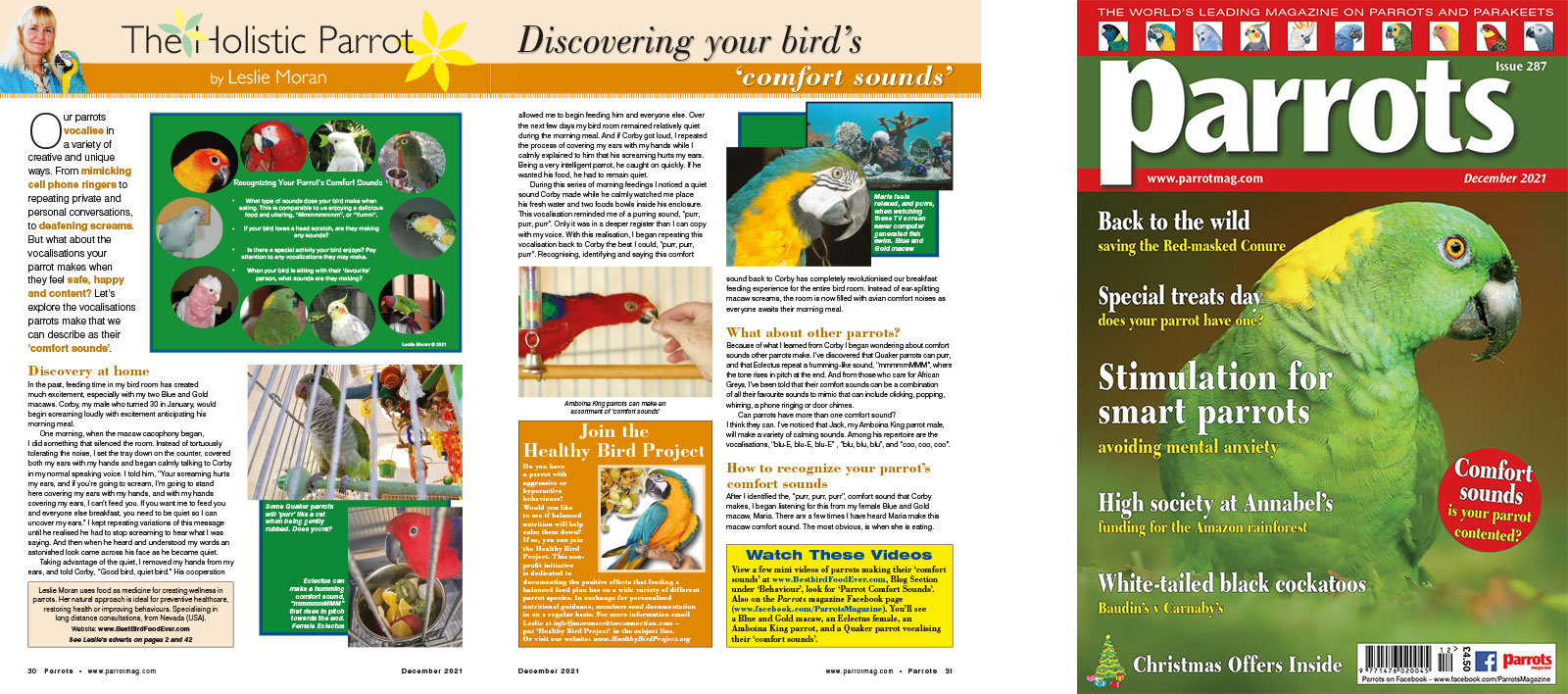
Complete Psittacine by Eb Cravens
Variety is ‘the spice of life’ or so goes the old saying as first spoken a couple of hundred years ago by poet William Cowper. And for psittacines in captivity, it also rings quite true, especially when it comes to their food dish!
April and I spend a fair amount of time trying to design a daily feeding regime that is both highly nourishing for our birds and interesting for them. After all, the lack of stimulation and limited foraging opportunities in domestic caged parrots is somewhat ameliorated by giving them varied or extraordinary food offerings.
A case in point. I am not a big fan of in-shell nuts for my flock. The quality of said nuts, whether almonds or pecans, etc. has been declining over the past few decades and I have felt for years it is more cost efficient and safer when it comes to bad nuts to just buy top quality shelled nuts and feed those. But a week ago, I was at the local health food store and I happened on a tray of organic in-shell walnuts that looked really fresh and good. So I bought a couple of dozen for the parrots.
Buy Now!

By Mary Jo Dilonardo
Intelligent birds need more stimulation in captivity than their not-so-brilliant counterparts. In a recent study, researchers discovered that brainier parrots have greater welfare needs when they are confined. The more intelligent they are, the more difficult it can be for them to adapt to not being free. The study’s lead author, Georgia Mason, says she was intrigued by the question of why some species adjust readily to captivity and others do not. Mason is the director of the Campbell Centre for the Study of Animal Welfare at the University of Guelph in Ontario, Canada.
Mason tells Treehugger, “We humans have known this since our first domestication attempts, and it’s no accident that we don’t farm gazelles, for example - it just wouldn’t work. And now we have neat statistical tools for identifying why the nature of some wild species is to be resilient, even to thrive when kept by us, while others instead risk stress and poor welfare. Parrots seem like a great group to apply these methods to because they’re so diverse.”
Mason says she was also curious whether parrots could be a type of ‘weed species’ like rats and rhesus monkeys that just thrive everywhere. “Each time I visited my parents in the southern suburbs of London, despite the grey skies, houses everywhere, and sounds of planes coming in and out of Heathrow, there would be more and more Ring-necked Parakeets everywhere, flying overhead and squawking on their birdfeeders, Amazing! She continues, “I suspected these birds might be so superbly adaptable that they’d thrive in captivity too. But it turns out I was totally wrong, as these clever species have unique and often unmet welfare needs in captivity.”
Buy Now!

By Rosemary Low
Someone asked me recently, “How many books have you written?” Good question! I had to go to my website, look under “Bibliography” and count them and excluding short books, I counted 31. My first books were published when I was in my twenties and, since then, I have usually published at intervals of two or three years.
The first book that I wrote without a commission was The Parrots of South America, published in 1972. At that time no book, anywhere in the world, had been published solely about the parrots from that region. Aviculturists preferred Australian parakeets, and there were several books about them. I had kept few Australian species. It was the parrots from the Neotropics that had won my heart. I loved their personalities, so different from the often more aloof Australian species.
An inveterate note taker, also a keeper of index-cards for parrot articles, I had a lot of information to hand that had never been collated previously. In 1971, during one week’s holiday, or possibly longer than that, I went to the Natural History Museum in South Kensington every day. That was before the bird collection moved to Tring. I was allowed to study, unsupervised, any skin specimens I wished to see. I had a great time opening drawers and encountering species I had never set eyes on before, because they were not in captivity. I described their plumage and measured them. This was sheer enjoyment!
Buy Now!

The Holistic Parrot by Leslie Moran
Our parrots vocalise in a variety of creative and unique ways. From mimicking cell phone ringers to repeating private and personal conversations, to deafening screams. But what about the vocalisations your parrot makes when they feel safe, happy and content? Let’s explore the vocalisations parrots make that we can describe as their ‘comfort sounds’.
In the past, feeding time in my bird room has created much excitement, especially with my two Blue and Gold macaws. Corby, my male who turned 30 in January, would begin screaming loudly with excitement anticipating his morning meal.
One morning, when the macaw cacophony began, I did something that silenced the room. Instead of tortuously tolerating the noise, I set the tray down on the counter, covered both my ears with my hands and began calmly talking to Corby in my normal speaking voice. I told him, “Your screaming hurts my ears, and if you’re going to scream, I’m going to stand here covering my ears with my hands, and with my hands covering my ears, I can’t feed you. If you want me to feed you and everyone else breakfast, you need to be quiet so I can uncover my ears.” I kept repeating variations of this message until he realised he had to stop screaming to hear what I was saying. And then when he heard and understood my words an astonished look came across his face as he became quiet.
Buy Now!




